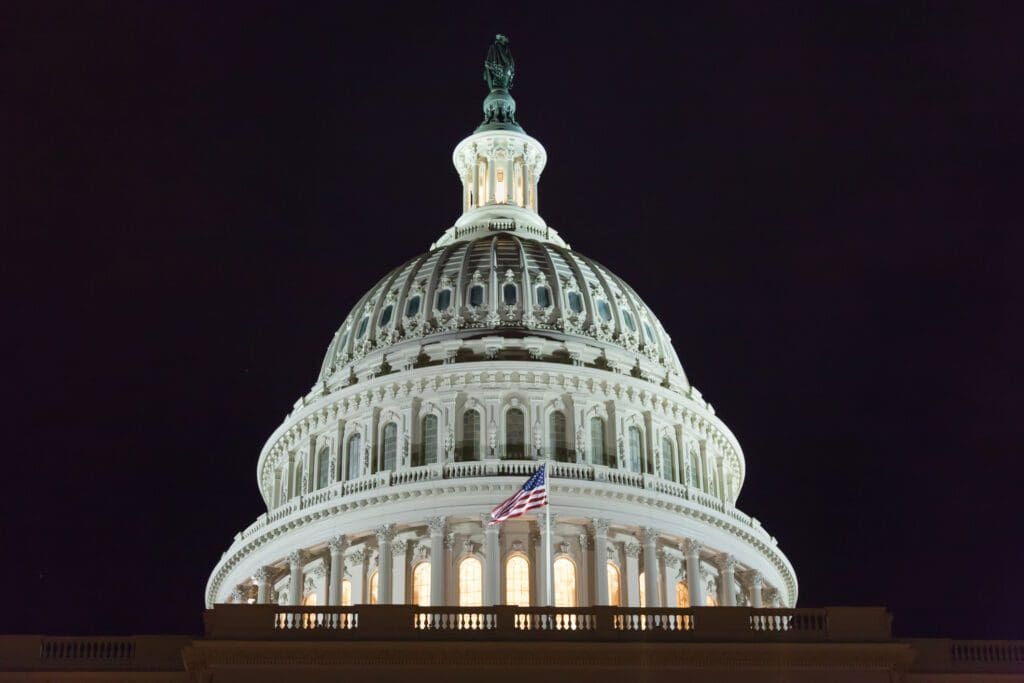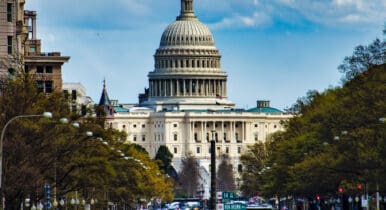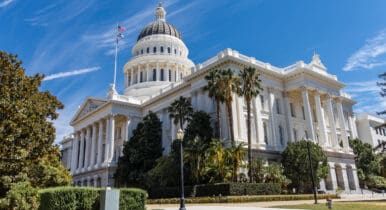Advocates Can Ride the Polarization Wave With This Post-Election Playbook

Election Day is upon us, and while that means campaign operatives will soon get a chance to sleep and reintroduce themselves to friends and family, corporate and issue advocacy professionals are about to get very busy assessing how voters’ say will impact policy across a range of issues and industries.
This year, those advocacy professionals will have an even bigger challenge than normal. One in five members of Congress and a quarter of the members of state legislative chambers will be brand new to their jobs, according to The Cook Political Report and Ballotpedia analyses.
Following an election driven by the twin tides of populism on the right and progressivism on the left, these new members are also likely to be more ideological than the elected officials they replace. Indeed, beyond what’s likely to be a pitched battle in Washington, party majorities in two-thirds of state legislative chambers are expected to grow in size, creating more supermajorities and one-party trifecta control that exerts more scrutiny on companies through polarized partisan lenses.
In the face of this more challenging and polarized environment, what should corporate and issue advocates do? Fortunately, there’s a well-honed playbook they can adopt to stay ahead of and even shape the issue environment before it’s too late.
Understand where your risk exists.
More fights are about to occur in more jurisdictions on a wider range of issues on which companies and industries will be expected to weigh in. Yet even the most well-resourced organizations cannot run a 50-state offense and defense.
To focus time and resources on where the most important battles are likely to occur, survey the landscape for where meaningful wins can be achieved and where serious political and reputational blows are likely to come.
This survey should identify and assess key factors that indicate the likelihood of opportunity or challenges on key issues and interests for your organization, such as ballot initiatives, current and past activity of legislators and regulators, the presence and activity level of national and local activists, competitors, and other stakeholders, including their lobbying efforts and political activities. Weighing these risk factors across each jurisdiction helps public affairs professionals and lobbying teams target with precision where to concentrate their resources and engage in the right fights early.
Find the stakeholders.
Friends are best found before the fighting begins, so once you understand where there’s risk and opportunity, it’s time to assess which stakeholders are likely to (or certainly ought to) engage in the debate, and whether you can work with them and have to overcome their opposition.
The traditional lobbying in “smoke-filled rooms” is long gone, so successful public affairs efforts must engage a range of actors beyond the actual policymakers, such as community organizations, competing businesses, academics, and public and private interest groups. Reading the tea leaves of their previous statements and positions, funding sources, any relevant affiliations, and interests illuminates where they may come down in the fight, and together, help create a “web” of all stakeholders to help direct firepower, bolster defenses, and build a winning coalition.
Build an information advantage.
Having assessed the landscape and mapped out the stakeholders, it’s time to dig deeper in who those policymakers and stakeholders are and what’s important to know about them. Whether it means developing key facts proving the value of a policy or discovering false motives of the opposition, an information advantage is an essential part of a winning public affairs toolkit.
These insights can include funding sources, inferred strategies and observed tactics, how they coordinate with other groups, who influences them, what their motivations are, and how credible they should be considered by others. With more stakeholders engaging in more debates, the field of play is wider than ever before, so sharp, usable information lets you shape the debate with government decision-makers, the press, and to the public.
Build a system to avoid surprises.
Even after charting a course and launching a campaign, the foundation you built on continues to shift. The advocacy landscape moves faster and with greater intensity along with heightened political and reputational risks. By the time critical information reaches the headlines, it’s often too late.
Going past noisy mass media and social media to decipher what your opponents and key stakeholders are likely to do next is critical to mitigating risks and seizing on opportunities. Analyzing a wide range of primary and secondary sources can indicate changes to the state of play, so build a regular program that synthesizes social media, press coverage, regulatory filings, meeting schedules, events, newsletters, and a wide range of other sources. It’s not the aggregation of these pieces of information, but rather the analysis of how they fit together that can provide a clear, compelling, and up-to-date view of the landscape that’s necessary to stay ahead.
As the final ballots are counted, corporate and issue advocates are gearing up for the policy debates to come. Next year’s legislative sessions and executive actions will be shaped and influenced sooner than you think. Smart public affairs professionals can leverage this playbook to put their organizations ahead of the curve before it’s too late.
Jeff Berkowitz is founder and CEO of Delve, a competitive intelligence firm that helps companies navigate political and reputational risks. Before forming Delve, Jeff spent more than a decade in politics and government, leading research and messaging operations at The White House, the U.S. Department of State, major presidential campaigns, and national industry and advocacy organizations.



